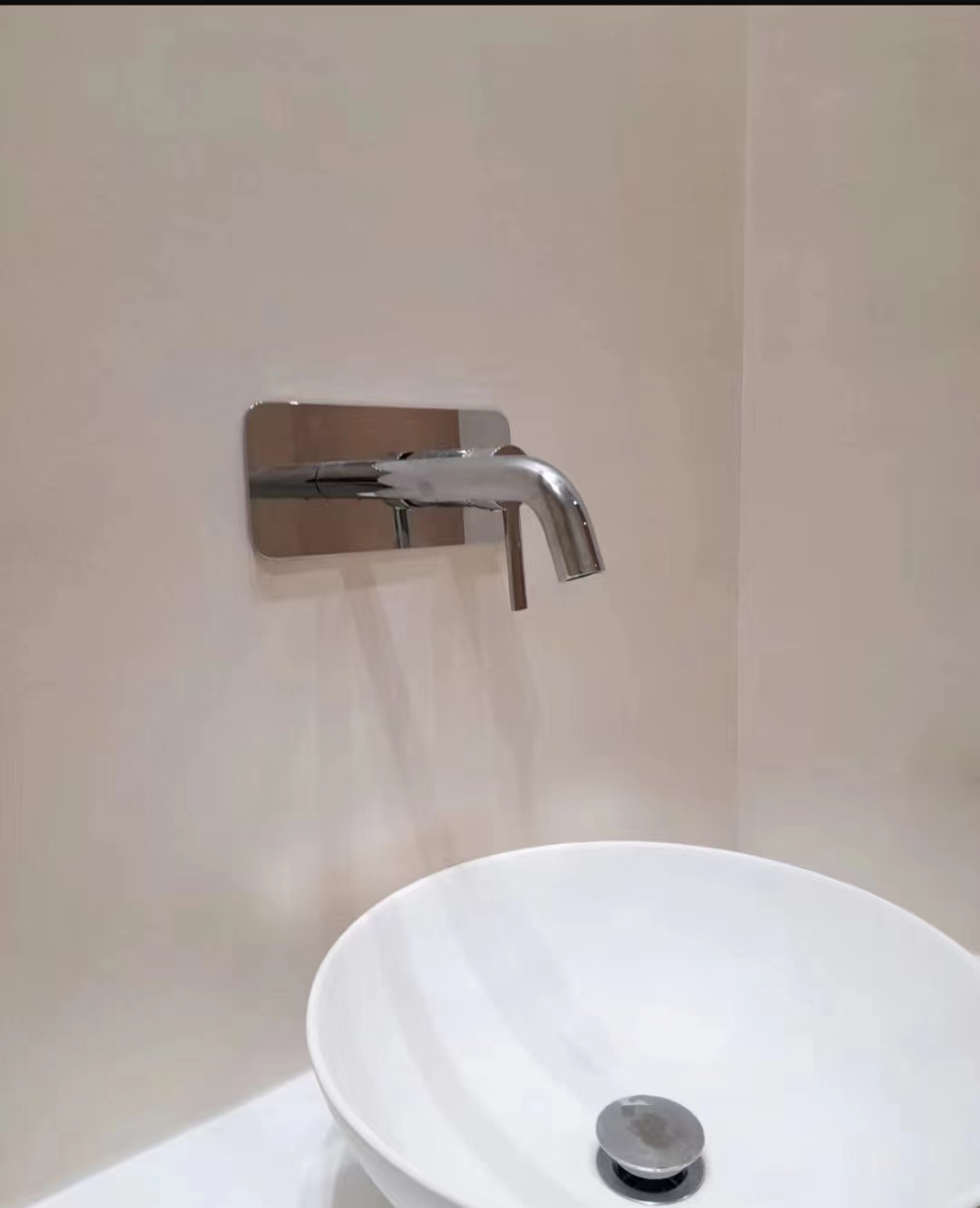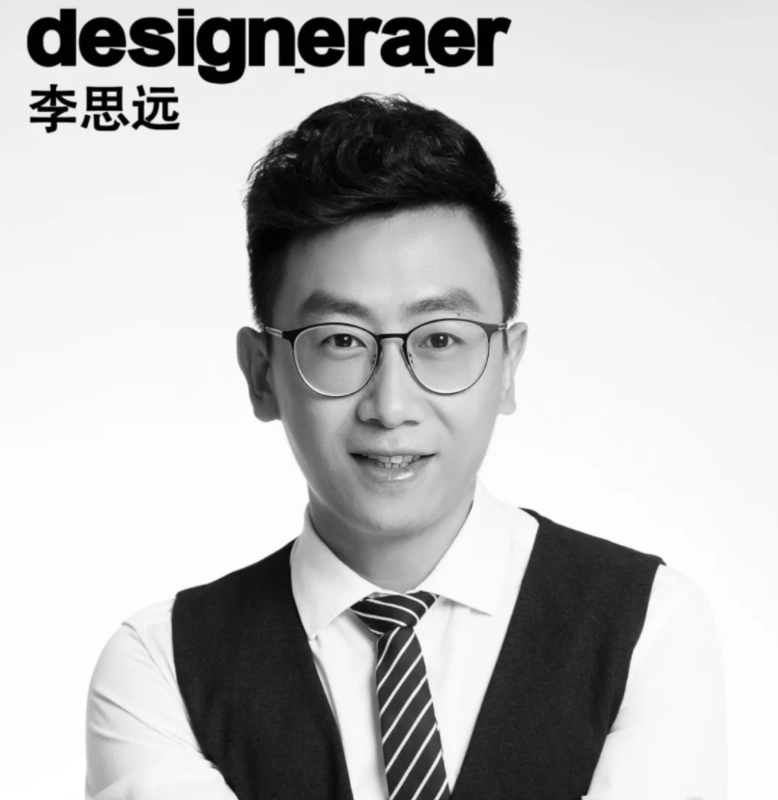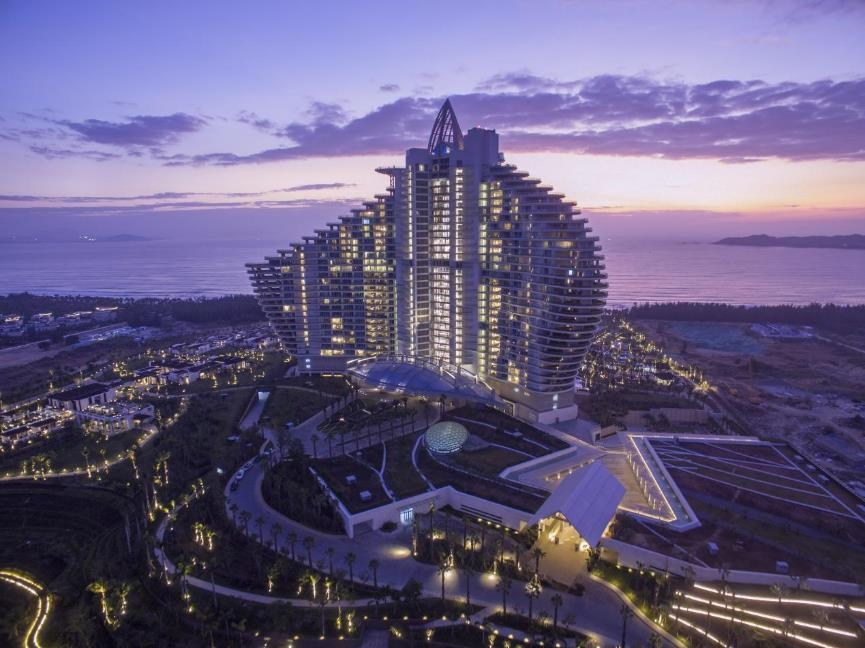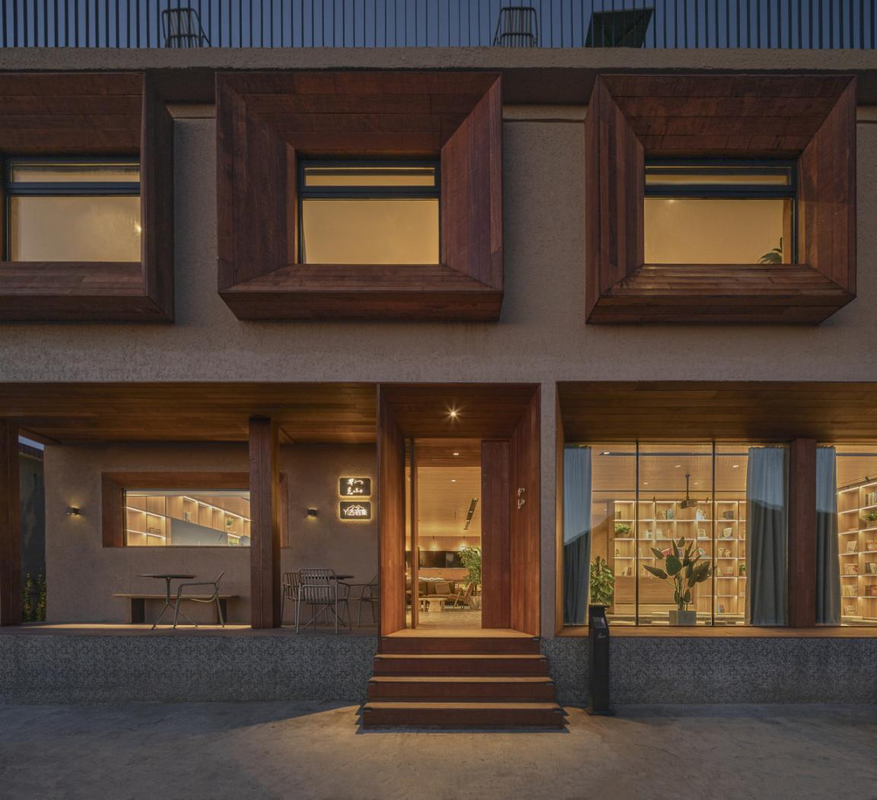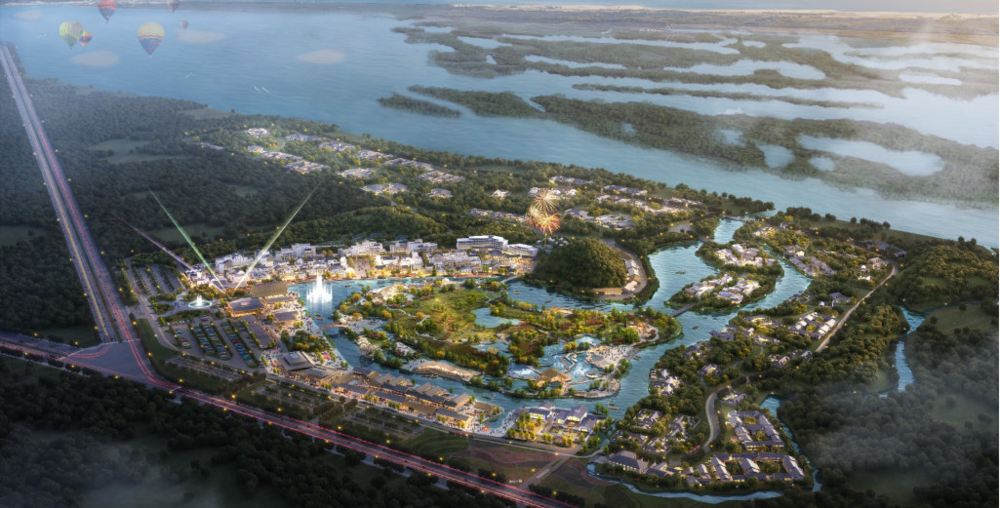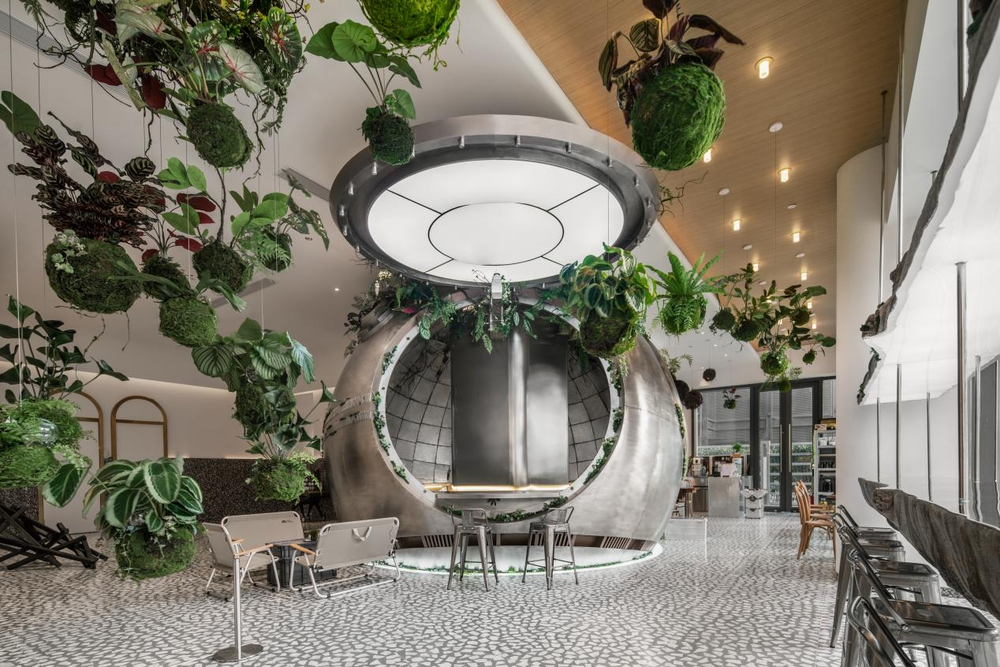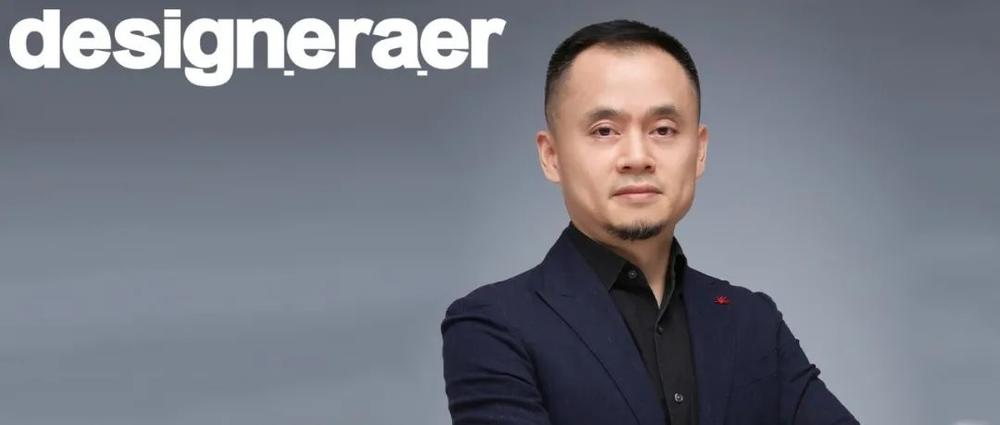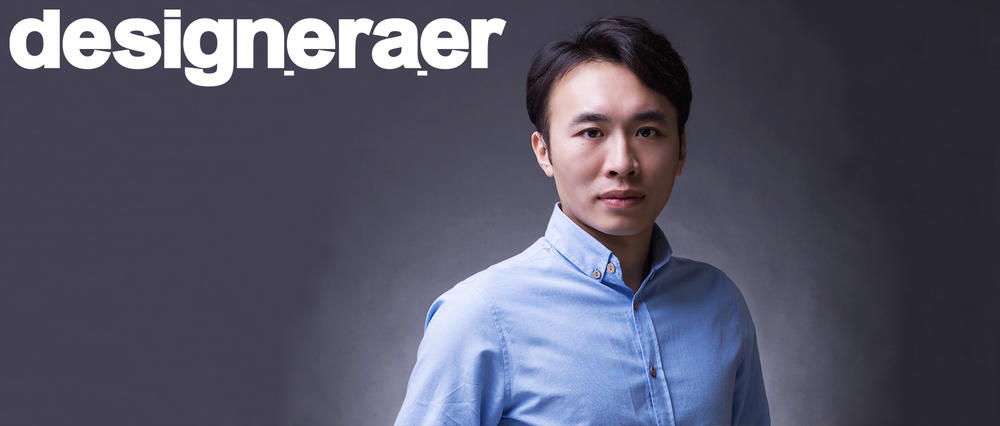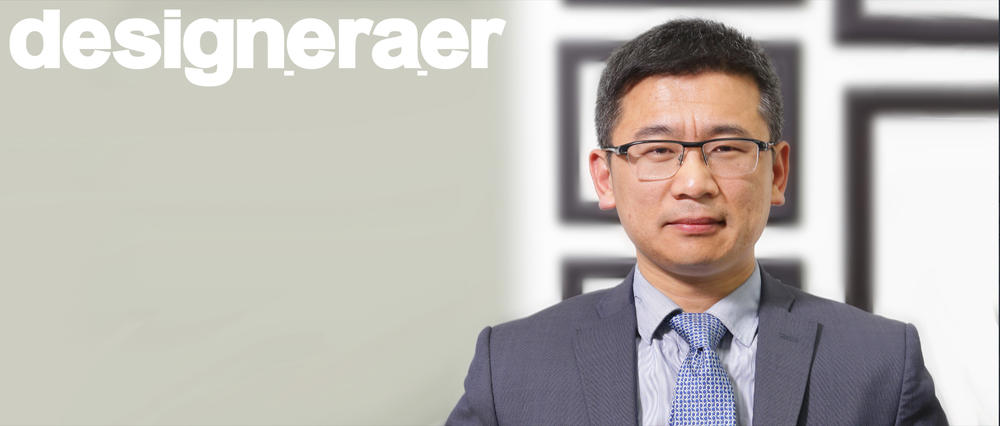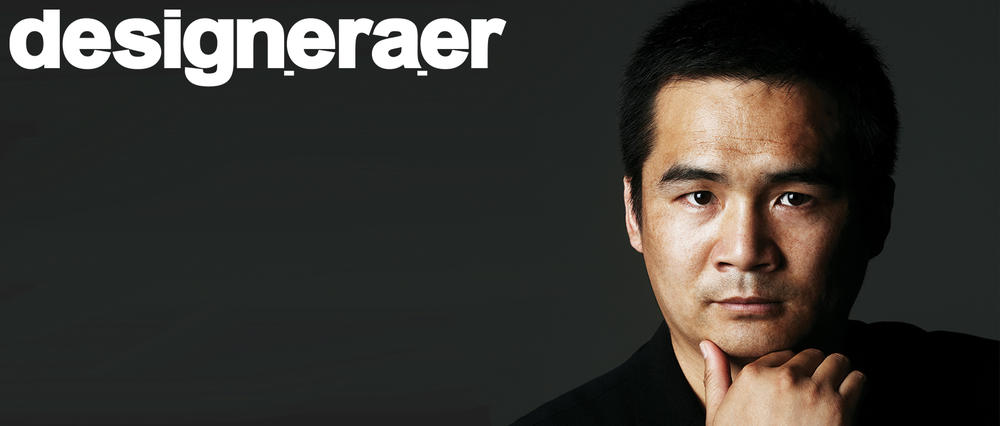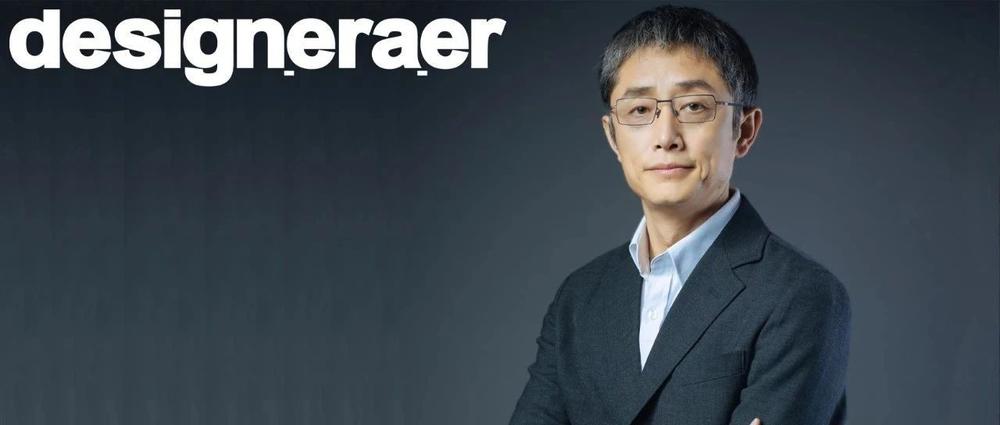×
·
Markus Appenzeller
自职业生涯开始以来,马故思一直负责国际大型建筑和城市规划项目。10多年来马故思的设计专长范围在小尺度的单体建筑设计到大规模的城市规划均有积累,并且在总体战略规划框架的执行及如何将其发展成高质量公共空间的领域也累积了深厚的专业知识。
时机时机:首先请您介绍一下亩加MLA+和自己.Introduction of MLA+ and yourself .
Markus:我是Markus Appenzeller, 是MLA+的三位创始人之一,我们公司的中文名称是亩加。十年前,我们在鹿特丹成立了公司,但我们从开始就知道我们不会只在荷兰进行设计实践,因为荷兰是个非常小的国家,同时我们也希望可以看到这个世界是如何运作的,我们能为这个世界带来什么。这就是为什么我们很早就把重点放在了中国,我们在深圳的办公室也开设了五年之久。
I'm Markus Appenzeller. I'm one of the three founders of company MLA+. In China, we called 亩加. And we started almost ten years ago as a company which was based in Rotterdam, but we had initially and from the beginning, had the ambition to work not just in the Netherlands, because it's a very small country. And actually our fascination also lights in kind of seeing how the world works and what we can bring into the world. And that's why very early on, we also put one of our focus point on China, and five years now we open up an office in Shenzhen.
我们深耕于许多领域——其中一个是战略规划。如何制定发展框架,在框架内进行更多的详细规划,最终在规划的引导下嵌入适合的建筑设计。我们也在工作中发展了特别的设计技能,我称之为“特殊的住宅技术”。不是标准的住房,而是不同的住房,微型住房,为残疾人或老年人设计的住房等等。
We've developed specific expertise in a number of fields-- One is a strategic planning. So how to make development frameworks within which then more detail plans and ultimately buildings can emerge. We developed special expertise, I call them kind of special housing technologies. So not the standard housing but housing which is somehow different. Micro living, living for people with a disability, or for aged people.
最后,我们一直在钻研并实践的另一个方向,我们称之为弹性公共景观,简单来说是城市绿地,但实际上不止如此,因为它不仅仅是绿色空间,还给城市增加了特色的开敞空间,并且这些外部空间也需要面对很多其它事情,比如人类福祉、生物多样性和气候变化。所以我认为这三个领域是我们特别关注的,也是特别擅长的。
Lastly, we've been developing an expertise that we have been working a lot on, what we called resilience public landscapes which is actually simplified. You could say, urban green, but it's actually a lot more, because it's not just green space, it is actually the outer spaces that also characterized the cities and the outer spaces, which also need to deal with a whole bunch of other things, human well being biodiversity and climate change. So I think these three fields are what we are particularly focusing on, particular good at.
发展到现在,MLA+已经成为一家拥有大约160名员工的公司,在伦敦、深圳、柏林、莫斯科还有其他一些城市都有开设工作室,我们是一家非常国际化的公司。新冠疫情这样的情况,让很多事情变得非常不同的。但如果你看到我自己的以及我的许多同事的工作现状,你会发现我们其实并没有太大的变化,因为我们一直在保持全球多个工作室协同工作,并使用大量的视频会议和技术工具作为辅助。
Over the time, MLA+ developed into a company of roughly a hundred sixty people with offices from London to Shenzhen, and many in between Berlin, Moscow and couple of other places. So we're working very much as an international company, and a situation like Covid, of course is very different and makes things very different. But if you look at my own work reality and the work reality of many of my colleagues is that actually not so much has changed, because we've always been working within offices, using a lot of video conferencing and technical tools to work.
02
时机时机:MLA+的设计理念是什么,可以具体介绍一下吗?Design Philosophy of MLA+
Markus:总的来说,我们想让人们的生活更美好、更精彩。这就是驱使我们每天努力工作的动力,也是让我们努力寻找可以实现这一目标的合适的设计解决方案的动力。
In general minds it is that we want to make people's lives better and more amazing. And that's actually what drives us to work hard every day and drives us to actually to find design solutions where we feel they help actually achieving that.
我们做的所有设计,实际上都与“场地”有关,我们每次开发的解决方案都是特别针对于这一特定场地的设计的,这并不意味着我们没有使用来自其他地方的知识。实际设计过程中我们会利用我们的国际知识和视野有针对性的提供一个设计解决方案,但是我们并不想提供通用的解决方案。
All the designs we do, are actually related to a place. So we want to develop solution every time that it can only happen in that place. That doesn't mean that we are not using the knowledge from elsewhere. We actually using our entire international knowledge to inform a design solution. But we are not offering sort of generic solutions for that could there be anywhere.
我来拿一个建筑项目来说一下我们是如何思考中国这个地域文脉的。我们在深圳建成了一个叫“热带大都市”的项目。这是一个微型公寓项目,但是不是几个公寓单元,而是4500个,这些单元被组合在一个城市街区。我认为最棒且最有趣的是,这些公寓实际上是非常小的,大概只有二十平方米。大家可能会说,尤其是在欧洲人会说,它们也太小了吧,而且都是挨着重复着。
Speaking about the Chinese context, I think and using an architectural project, I think we've done a project which we call the tropical metropolis. It’s actually based in Shenzhen. It's a project which has a micro apartments, but then not just a couple of them but four and a half thousand units, which were combined in one city block. And the nicest thing or the interesting thing about that is that actually they are very small, they're only like twenty square meters, so you could say, Oh, this is like, in Europe, people would say no is all too small and is all too close to full bake and the repetition.
但实际上在中国大城市的背景下它完成了几件事——一是它让那些住在城外的人可以负担得起市区住房了,这个项目就在一个市中心地铁站旁边。它还提供了共享的设施,要知道如果这个地方有4500个单元公寓,那么你可能有超过6000人住在那里。所以肯定就会有公用设施,超市、餐厅、健身房、文化中心等等。这是一种与欧洲城市生活模式不同的另一种模式。在欧洲,这种规模的项目是永远无法获得批准实施的,因为人们会反对说这种极端的复制需要完全忽视这样一个大型集体生活在一起所带来的社会层面的后果。这是其中一个例子。
But actually in the context of Chinese mega-cities, it delivers a couple of things -- one is actually it makes housing affordable for people which otherwise would have to live really outside the city. And this project is really next to a metro station in a fairly central location. It also allows for sharing. So, if you have four and a half thousand units then you have probably over six thousand people living there. So it's out of the question that you have shared facilities, supermarkets, restaurants, sports clubs, cultural centers, etc. And that's just kind of, it’s a different living model than with people are used to in, for example, European cities. So in the European City we would never be able to get any approval for this kind of project at that scale, because people would just sort of objects in a way that the radical repetition that making this liable actually requires completely overlooking the social dimension that such a big collective living together actually can also deliver in terms of quality. So that's one example.
▲ tropical metropolis深圳20平米住宅区 © MLA+
在城市规划方面,我们所做的项目类型很大程度上也取决于当地人们所拥有的能力和技能。中国在制定总体规划方面有着相当先进的知识,因为在过去的二三十年里已经有很多经验了,人们因此熟能生巧。但是如果你把这个和我们在非洲加纳做的一个项目相比,那个项目也是一个城市扩展项目,和最近几十年在中国出现的类似,我们仔细考虑过当地居民拥有怎样的能力,然后得到了当地技术知识水平相对还是很低的结论,所以我们调整了规划。
On the urban planning scale, there is probably, the types of assignments and the types of plans we are making also largely depends on the local skills that people have. So, China has a pretty advanced knowledge on how to make master plans, because that there had been a lot in the last twenty thirty years. So people have become pretty skilled in doing that. But if you compare this to, for example, a project which we did in Ghana Africa, we also did a plan on city extension, pretty much like what you saw in other recent decades in China as well where we really carefully thought about, what is the local skill set that people have and have to conclude that the level of technical knowledge is much smaller. Then we adjust the plan.
在中国,我们制定的规划非常复杂。但在加纳,我们决定做一些非常基础的东西。我们从一个网格开始,这是用来划分土地和划分基础设施的最简单的方法,然后再进一步发展它。为了确保所以我们经常询问当地人他们的技术能力以及他们可以实现到什么程度,因为去指定一个复杂但是完全不能落地的规划方案是完全没有意义的,而且后果也会很糟糕。所以这就是为什么我们不断地问自己,在这样的背景下,什么是真正可行的。
So whereas in China, we make very complex plans. There we decided to make something very basic. So we started with a grid but that was the most simple device you can use to the divide land and to divide infrastructure, and from there we then, kind of developed it further. Just to make sure and always ask what is the skill set local people have and what can they actually manage because there's no point of making a complex plan for people which don't have to skill actually to implement it. It will lead to disaster. So that's why we are constantly asking ourselves, what it actually realistically possible in such context.
▲ Africa City planning © MLA+
03
时机时机:结合自身经验,您对城市规划和建筑设计的跨界思考有什么?Cross disciplinary thinking of urban planning and architectural design.
Markus:我们还把设计思维融入到规划层面中,通常是更大的尺度的项目,同时也将规划思维纳入设计实践。因为我认为它们在某种程度上是相互关联的,很多常见的问题也是因为规划者不是设计师,设计师也不是规划者。
We also introduce design thinking on the planning level, which is typically the larger scale, and we include the planning thinking into the design scale. Because I think they're all somehow interconnected and you can, and often that is exactly the problem that planners are not designers and designers are not planners.
这也是为什么我们公司一直在跨越这些边界,用规划、城市设计、建筑设计以及其他不同尺度的设计方法和思维来实践。
That's also why we as a company and work across these borders and use means and thinking of in a way all the three a scale, planning, urban design and architectural design in the different in the other scales as well.
这些专业其实都是相对互通的,但当然,与设计城市空间相比,设计一座建筑还是需要不同的思维方式和技能。
The boundaries between scales and in a way all the professions are quite fluid. But of course designing a building requires a different mindset and also a different skill set than in designing an urban space.
城市规划考虑的是外部环境,比如公共空间是什么样的?它们是如何组织的?其中的基础设施是如何运作的?建筑物外立面是什么样子的?但它并没有真正深入研究建筑的内部的运作。而建筑设计则是在关注建筑外观的同时,更加思考建筑的内部运作方式,更关注物理空间,关注材料,当然这是一个更小的空间范围。我们如何体验空间也是我认为城市尺度和建筑尺度上处理方式不同的一点。在城市的尺度项目中,我们在环境上做了大量的工作,我们也在开放空间、绿色植物和城市中的自然元素上做了大量的工作来规划设计。而在建筑中,真正重要的是空间的纯粹性,关于构建的思考,我如何使用墙壁,天花板,地板,开口来创造一个有趣的空间。
City planning is talking about the exterior. So how do public spaces? How are they organized? How does the infrastructure within that work? How do buildings look like from the outside? But it's not really going too much into inner workings of the building. Whereas architectural really is about also about how it looks like on the outside, but also how inner working of the building actually is. It's a lot more physical. It's about materials. It's about a smaller scale range of space. It's about, in the end, how do our experience the space, and that's also how I think the difference in approach to the urban scale and to the architecture scale. On the urban scale, we work a lot with atmospheres, we work a lot with also open space and greenery and the natural elements in the city to structure them. Whereas in architecture is really about the purity of space. The kind of tectonic operations, how can I use walls, ceilings, floors, openings in such a way that they create an interesting space.
当然,亚洲和欧洲的城市背景也有差异。如果讨论的是一个欧洲城市的六层或八层的建筑,那么关于"是否在高层上设计更多的公共空间? "这样的问题就不会出现。但在亚洲城市,这实际上是我们正在深入研究的内容。我们应如何真正打造出一个更三维的建筑,包括更高楼层的公共空间设计和公共性的植入,以及把那种街道中的生活场景带入到建筑其他不同的楼层中。
There is also a difference between the Asian and the European context of cities. So if you talk about the building with like six stories or eight stories in a European city, then the question does not arise ‘do you actually also need public space on the on higher levels?’ But in Asian cities, that is actually something which more and more we are kind of investigating, how we can really make a much more three dimensional architecture, sort of including public space and publicness on higher levels and in a way pulling,also the the kind of street life in the street level life up into the building on different different floors.
尤其是亚洲城市的建筑,体量是非常大的,如果我们不设法在这些大型建筑中加入公共元素,那么它们就会变成一个单纯的巨物,且变得非常内向自治,进而上失去了它们对城市生活的积极贡献。这就是为什么我认为在任何可能的情况下,公共性都是很重要的,植入某种形式的公共空间,不一定非得是纯粹的公共空间,像进入建筑物的公共通道也是可以的。
Buildings especially in Asian cities, have become so big that if we don't manage to include in a public elements of publicness in these large buildings, then they become enormous, they become very sort of autonomous and actually lose their function as a positive contribution to city life. And that's why I think it's important to wherever possible, in a way, it public, some form of publicness, doesn't always have to be completely public space, but something of like public access into buildings.
04
时机时机:您对于当下的城市公共空间现状有什么样的思考?Thinking on current public spaces
Markus:公共空间最原始最基础的定义是一个你可以没有任何目的,没有任何限制而停留的空间。一般来说,街道就是典型的公共空间,但近年来,公共和私人的定义也出现了程度上的分级,购物中心、商业空间,无论是室内还是室外都是很好的例子。从法律意义上讲,它们实际上不是公共的,它们是私有的,只是可以被具有公共到达性。
Originally and basically public spaces in space where you can be without any purpose and without any limitation. So typically a street is a public space, but in recent years and there's also gradations between public and private, and I think shopping malls are a typical, any of these shopping environments whether indoors or outdoors are good examples. They actually not public in a legal sense. They are private, but they are publicly accessible.
我们需要找到并保持正确的平衡。我认为把公共空间的商业化程度去界定清楚是很重要的,很多时候这还是有点模糊的,什么是公共空间,什么这种商业空间。我认为一般来说,尤其是涉及到自然,我们应该确保自然空间一定是公共的,而不能以任何形式被商业化。但在公园的边缘空间,有一些咖啡馆和一些售货亭是没有什么错的,但要保证它们可以很容易的被找到。
It's really finding and keeping the right balance. I'm all for being clear about that. So sometimes it's a bit blurry, what is public and what this kind of commercialized and I think in general I think we should, especially when it comes to nature, we should make sure that nature actually is public and nature is not commercialized in any form or shape. And on the other hand, at the edge of a park, it's nothing wrong of having a couple of cafes and some kiosk somewhere in between, but then it's kind of clearly legible.
▲ 成都天府 ©MLA+
还有一个是我们目前设计公园时经常用到的理念。我们也强烈主张,当你建造公园的时候,有些甚至可以不是公共的,那些区域只是为了保护原生态,所以它甚至不是人们可以进入的,因为目的是保护生态系统,并确保自然可以被留在城市里。所以我们在开发一种系统,如何让人们不进入的情况下还能一定程度上感知它,基本上穿过景观便可以充分享受它,因为人们一旦踏入便会破坏这部分自然体验。我认为我们需要越来越多往这个方向实践,这样我们才能应对生物多样性缺失,并在城市环境中重建生态系统。
There is also and that's what part of the philosophy which we use a lot when we now design parks. We also strongly advocate that when you do parks, there are some are not even public, so they are just, they just protected wilderness, so it's not even for human access because aim to protect ecosystems and be also to make sure that the nature remains within the city. So we are kind of developed systems, how we can actually, in a way, make it perceivable for human beings, so you can basically walks through the landscape and you can enjoy the landscape. But you can actually not access that part of the landscape, because human access would actually destroy the very a scenery of the very experience. and I think that we have to do this more and more so that we can deal with the loss of biodiversity and kind of reinstall ecosystems also in the urban context.
05
时机时机:根据MLA+伦敦奥运会公园更新的经历,不同届奥运会(比如北京奥运会)对城市影响您的思考是怎样的?According to the experience of London Olympic park, do you have any thoughts on Olympics’ impact on various cities
Markus:我认为这两届奥运会的目的和宣传是完全不同的。在伦敦,他们认为需要重建那片后来成为了奥林匹克公园的区域,因为那是一个衰败的工业片区,有空气污染等等的问题。他们认为奥运会将是一个很好的投资方式,也是一个很好的方式来推进这部分城市更新,因为城市更新早晚都会发生的。因此,重建的想法已经是伦敦向奥林匹克委员会提出方案中的一部分了,只是现在他们正在实现它。而我认为在北京的背景下,有的是一个完全不同的动机。
和许多其他奥运会上看到的情况相似,奥运会赛事什么的一切结束后,才提出关于“我们要用这些基础设施做什么?”的问题。
That's more a similar thing we saw in many Olympic Games that they were over then question arises. What do we do with all these infrastructure?
当我们在参与伦敦这个项目时,我们就能清楚的看到人们从一开始就认为城市更新是我们最终努力的方向,而奥运会只是一个中间阶段。但是奥林匹克公园和奥林匹克设施有很多基础设施的要求和限制,但实际上不仅仅是这样,它更是一个需要考虑人群的奥林匹克公园,是关于流动的,是关于设施管理的,关于如何吸引人们来到奥林匹克公园的,还有关于安全,所有这些都在很大程度上决定了到底什么是可能的。所以在伦敦的背景下,他们建造了一个奥林匹克公园,但实际他们已经计划好之后要做什么了,并在使用它的方式上做了一些调整。
When people and that's what we were involved in London, we saw this clearly that people initially thought that the regeneration is basically what you're working towards and the Olympics are kind of intermediate stage. But an Olympic Park and Olympic facilities come with so many infrastructural requirements and constraints, that it's actually not really like that. It's more like there is an Olympic Park which has it's about crowd flow. It's about flows. It's about the management of the facilities. It's about getting people around the Park Olympic Park. It's about security. All these things in a way dictates to a large extent what is possible. So in the London context, they did an Olympic Park, but they already plan for what to do after and there was some tweaking and some adjustment in such a way you can expect to use it.
北京在任何方面都比伦敦更像纪念性城市。
Beijing in all terms is a much more monumental city than the London is.
我认为这是一个有趣的概念,其实我们在设计开发的时候也会有类似的想法。在北京可以看到一个清晰可见宏观的城市规划,两个轴线、环路以及中间分布的棋盘式的网格。你但在这些网格中间又有无数个微型城市,两类“城市”的思考是完全不同的,后者是可步行的、人类友好尺度的,也是关于社区、关于街道上生活服务的。
And I think it's an interesting concept, because at some point we developed also that idea of like, there is a macro city which in Beijing is very clearly visible with the big, the two axes and the rings and the grid in between and then you have these micro cities, which are actually entire districts within this within the grid, which can actually have a completely different logic which are walkable, which are small scale, which is about community, which is about all sorts of services on the street.
我几乎在任何地方都能找到有趣的东西,这也会让你重新思考你对很多事情的先入之见到底是否都是好的,是否都是真的。
I'd almost in any place you find something which you find sort of interesting and actually which makes you also rethink whether all your preconceptions about what is good is actually are all true or not.
06
时机时机:您认为复杂项目中多方的参与的方式和以前有变化么?Do you think bottom up methods become more popular in planning process?
Markus:人在项目中的作用比过去发挥着更大的作用,因为我们也发现某些想法只有在充分理解人之后才能成功达成。所以在我们实践的所有项目中,都有一个非常重要的要素,可以说是自下而上,但我们认为更好的说法是,这是一个包容性的过程,这是我们的目标,我们让每个人都可以参与到项目里来:政府的相关领导,最终使用的用户、住户或者顾客,业主等等,我们在一个项目中尽量把他们聚集在一起,这就是我们的目标。当然有时为达到这个目标我们需要更多的支持,在一般情况下,它或多或少都可以自动发生。
People play a bigger role than they did in the past everywhere, because we've also seen that certain things can only be delivered with people. So in all places we’re working in and there is a bigger component of, you could say, bottom up, but I think for us that it's not so much the point. I think for us, it's much more, I was more call it an inclusive process which we're aiming for, which actually includes everybody into this. So people from a sort of administrative governing layer and people, which are ultimately, either the users or the residents or the the guest or whatever, and actually bringing them together in a product. That's what our aim is. And sometimes that needs a bit more more support to get this, and in other conditions, it it happens more or less automatically.
如果你在早期就让更多相关人员参与,可能设计的过程会稍微长一点,但整个审批过程会快得多,因为你已经获得了一些认同和支持。然而,如果你采用传统的流程方法,那么你可能会在设计阶段比较快,但随后批准需要很长的时间,因为一定会有人反对它,有人不同意它。然后你必须一遍又一遍的调整。城市发展总是会有一定程度的冲突,这是很正常的,但是你可以通过尽早让人们参与进来,在冲突成为问题之前尽量帮助解决它。
If you include people early on, then that process of like getting to a design that might take slightly longer, but the whole approval process is much quicker because you already have support for something. Whereas if you go down the traditional route then it's often that's you might be quickened during a plan, but then the approval takes longer because there is people who object to it, there is people who don't agree with it. And then you are again, you kind of getting into runs off adjustments, and there's also, of course, city development is always a degree of conflict. That's natural. But you can, by involving people early on, you can in a way help solving this conflicts before they become a problem.
07
时机时机:作为MLA+的创始人,您对公司内的年轻设计师有什么期望?About the young
Markus:他们更容易在一个快速变化的世界中接受复杂性,因为这就是我们的世界正在以前所未有的速度在变化,现在的年轻人需要面对现状并在其中生存。我想有两种正常的反应:一个是恐惧,在某种程度上试图阻止这一切,虽然我认为这几乎是不可能做到的;另一种就是拥抱它,并把它作为你人生和你设计思考的真正驱动力。我想这是我所接触到的许多学生以及我们许多年轻的同事们真正令人敬佩的地方,比老一辈的人,他们在处理很多事情时都有毫无保留的冲劲。我真的很喜欢。
They embrace complexity in a rapidly changing world much more easily, because that's what our world is changing faster than ever. And now there is a younger generation which actually needs to operate in it. And I think there's two reactions you can have. One is fear and in a way trying to to kind of stop this, which I think is almost impossible to do. The other is actually sort of embracing it and using it as a driving force for your own life for your own thinking around design. And I think that's what I really admire about many of the students I am dealing with and also many of our young colleagues that they are sort of approaching a lot of things with a lot less reservation than the older generation would do. I really like that.
世界变化得越快,你就必须更加坚定自己的价值体系,我认为现在年轻人在很多方面都比我们这一代人更加坚定。他们有自己的信仰和见解,他们比起我们也更有意识地捍卫自己的信仰和见解,他们只是同时也接受了更多正在发生的改变,我认为他们很像海里的岩石,不可动摇。
The quicker the world changes, the more firm you have to be in terms of your own system of values, and I think there are a lot firm in many ways than my generation is. So they have their beliefs and they have their insights, I think they are defending them much more consciously than my generation did. And at the same time they just accept a lot more that changing something which happens, and it's I think there are more the rocks in the sea than we.
在我看来,尤其是我的学生,他们的信念更坚定了,我认为这很好。
Now as I see, especially my students, they are a lot more, the conviction is much higher, and I think that's nice.
08
时机时机:最后给年轻设计师们一些鼓励吧。To the young
Markus:保持好奇心,保持开放,永远不要落入窠臼,不要认为你的先入之见一定就是现实的真相。
Stay curious, stay open, and never fall into the trap of assuming that your preconceptions are what reality really is about.
拍摄:der媒体部
视频:田宁
实录校对:Kelly,Alex
宣传:der媒体部
时机时机APP @designeraer栏目组
